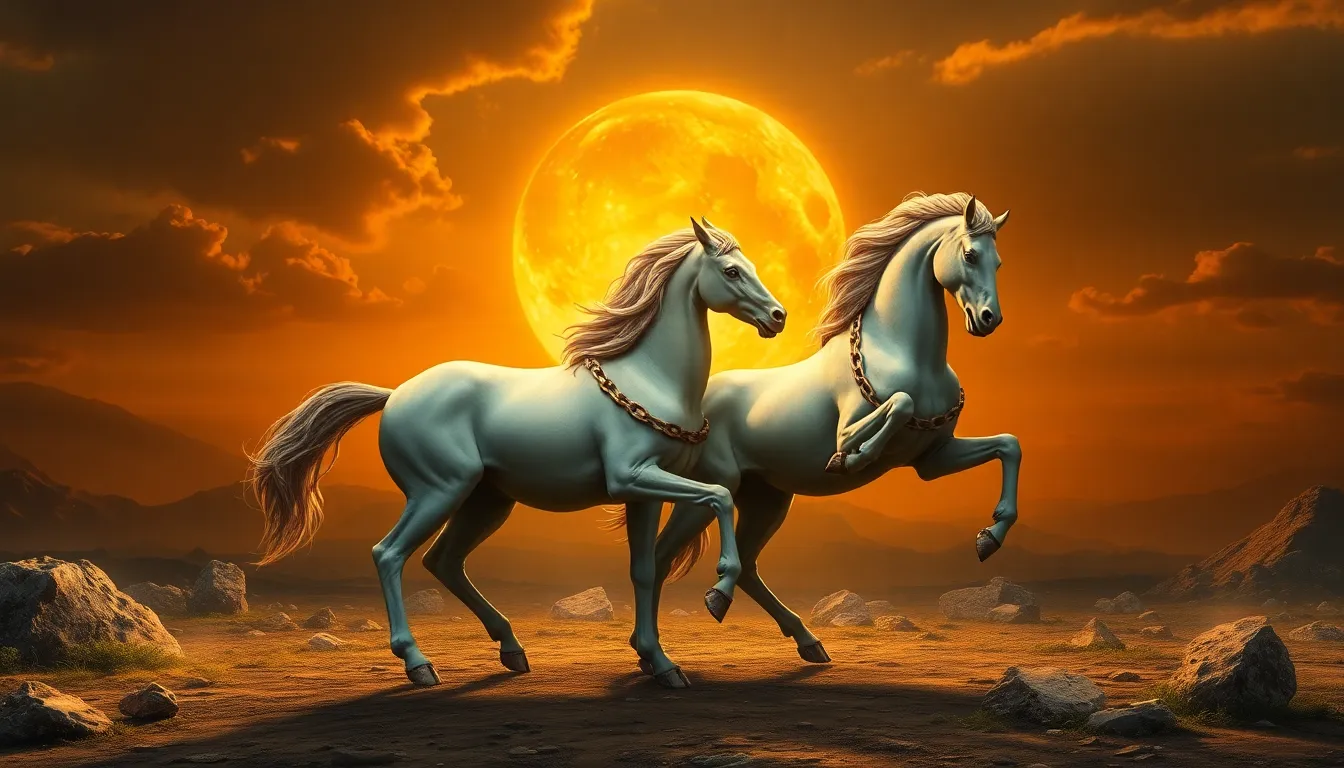The Dynamics of Centaur Relationships in Mythology
I. Introduction
Centaurs are fascinating creatures from Greek mythology, depicted as half-human and half-horse. They embody a unique juxtaposition of human intellect and animalistic instinct, making their narratives rich and complex. Centaur relationships, whether among themselves or with gods and humans, are significant as they reflect deeper themes of duality, conflict, and camaraderie.
The purpose of this article is to explore the various dynamics of centaur relationships in mythology, providing insight into their historical context, symbolic meanings, and modern interpretations.
II. Historical Context of Centaur Myths
The origins of centaur mythology can be traced back to ancient Greece, where they first appeared in art and literature around the 8th century BCE. The earliest mention of centaurs is found in Homer’s epics, where they are often depicted as wild and unruly beings.
Cultural influences on the portrayal of centaurs varied greatly. They were seen as symbols of the untamed aspects of nature and humanity, influenced by the changing societal views on civilization and barbarism. Over time, the portrayal of centaurs evolved from savage creatures to more nuanced characters, particularly in later works by philosophers and poets.
As centuries progressed, centaur stories were adapted, reflecting the societal changes and philosophical inquiries of their times, illustrating the fluidity of mythological narratives.
III. The Dual Nature of Centaurs
The symbolism of duality in centaurs is profound, representing the constant struggle between human intellect and animal instinct. This duality is mirrored in their internal conflicts, often leading to tragic outcomes. Many centaurs grapple with their nature, striving for a balance between their civilized and primal sides.
Case studies of famous centaur figures provide insight into this duality:
- Chiron: Known for his wisdom and healing abilities, Chiron represents the higher aspects of centaur nature. Unlike his brethren, he is often depicted as a nurturing figure and a mentor to heroes.
- Pholus: A more tragic figure, Pholus embodies the conflict within centaurs. His story illustrates the consequences of succumbing to animal instincts, as he becomes embroiled in a deadly conflict with the heroes of the Argonauts.
IV. Centaurs and Their Relationships with Gods and Humans
Centaur relationships with deities and humans are multifaceted, characterized by both alliances and conflicts. Their interactions with gods often serve to highlight their unique position within the mythological hierarchy.
For instance, while some centaurs like Chiron are respected by the gods and often serve as mentors, others like the centaurs of the Lapiths are portrayed as antagonists, engaging in violent confrontations with divine beings.
Furthermore, centaur relationships with humans can be complex:
- Mentors: Centaurs like Chiron serve as wise teachers and guides for heroes such as Achilles and Asclepius.
- Adversaries: In contrast, other centaurs, particularly during the Centauromachy, are depicted as fierce opponents, representing chaos and the breakdown of civilized order.
Mythological narratives often illustrate these dynamics, emphasizing the duality of centaur existence as both noble and savage.
V. Themes of Friendship and Rivalry
The camaraderie among centaurs is represented in various myths, showcasing their ability to form bonds despite their inherent conflicts. These friendships often serve as a counterpoint to the rivalries that characterize many centaur stories.
Notable rivalries can be seen in tales such as the Centauromachy, where the centaurs’ clash with the Lapiths results in a legendary battle, symbolizing the struggle between civilization and barbarism.
The impact of these relationships extends to broader mythological narratives, often providing moral lessons about the nature of conflict, loyalty, and the consequences of unchecked behavior.
VI. Gender Dynamics Among Centaurs
Gender dynamics play a crucial role in centaur mythology, particularly in the portrayal of male and female centaurs. Male centaurs are often depicted as wild and unruly, embodying the animalistic side of their nature. In contrast, female centaurs, though less frequently mentioned, are often portrayed with more complexity.
The relationships and roles of centaur women are significant in their own right. For instance:
- Hippolyta: A notable female centaur, she symbolizes strength and leadership among her kind.
- Female centaurs in literature: Often depicted as nurturing figures, serving as counterbalances to their male counterparts.
This analysis reveals how gendered narratives within centaur stories contribute to the overall themes of duality and conflict present in mythology.
VII. Modern Interpretations and Adaptations
Centaurs have found their way into contemporary literature and media, often reinterpreted to reflect modern values and concerns. They appear in popular works such as J.K. Rowling’s “Harry Potter” series, where they are portrayed as wise and noble beings, contrasting with their more savage representations in ancient myths.
The relevance of centaur relationships in modern storytelling lies in their ability to symbolize the struggle between civilization and primal instincts. Modern adaptations often explore themes of identity, belonging, and the quest for balance in a chaotic world.
These interpretations either reflect traditional myths or diverge from them, offering fresh perspectives on the complexities of centaur dynamics.
VIII. Conclusion
In conclusion, the dynamics of centaur relationships in mythology reveal significant themes of duality, conflict, and camaraderie. From their historical origins to their modern interpretations, centaurs serve as a rich lens through which we can explore the complexities of human nature.
The ongoing significance of centaur relationships in mythology underscores their relevance in understanding the balance between our civilized and primal selves. Ultimately, the stories of centaurs remind us of the intricate interplay between intellect and instinct, a theme as timeless as the myths themselves.




